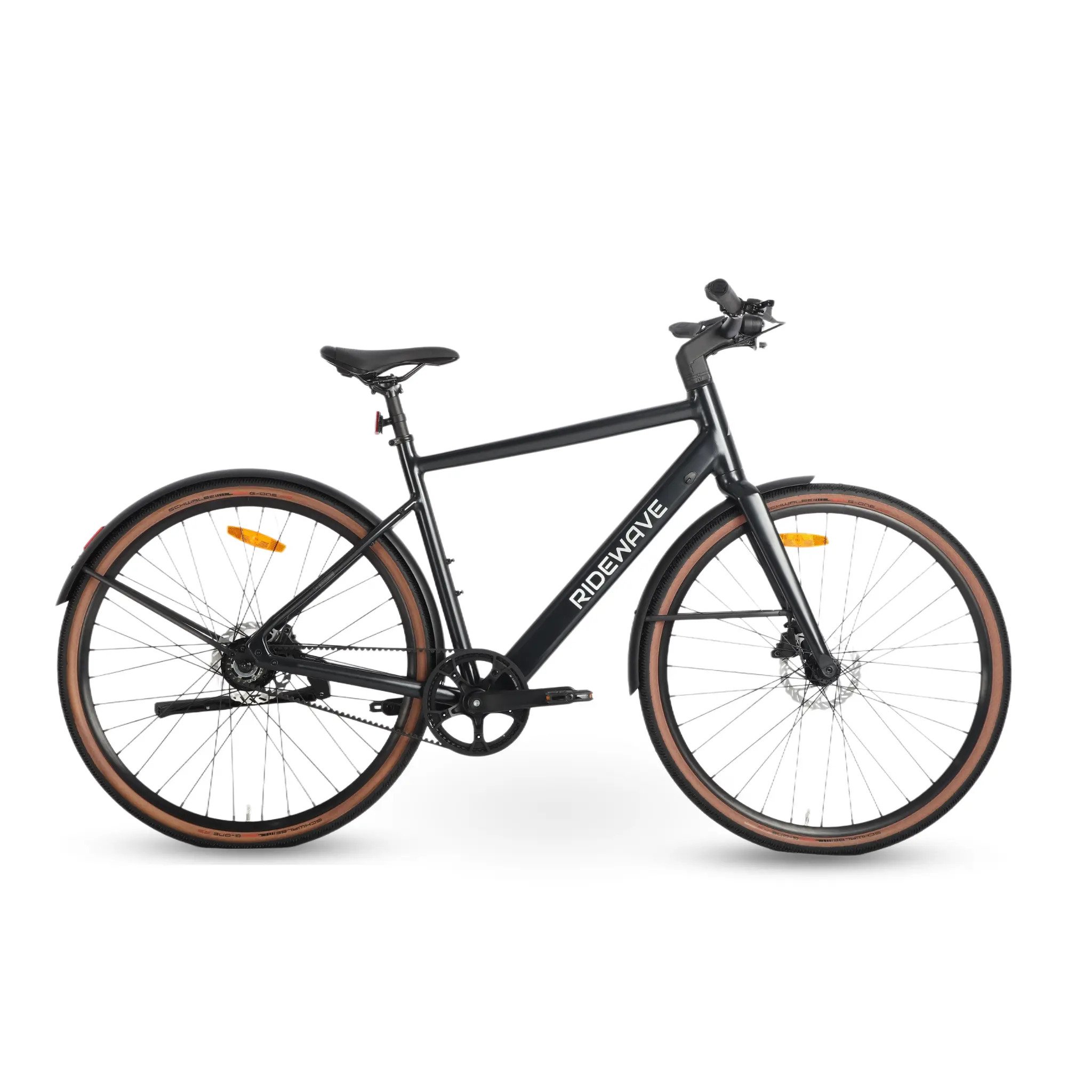Glide-B Assembly ManualUpdated 6 months ago
Preassembly tips
Preparing your Ridewave electric bike for the journey ahead is an exciting start! If you're not entirely comfortable with bike mechanics, consider having it professionally assembled at your local bike shop. Here’s a streamlined guide to get you going:
- Carefully cut only the packing zip ties to avoid damaging any important wires or cables.
- Pay attention to the plastic spacer in the front brake caliper. It keeps the brake pistons open when the wheel or spacer isn’t in place. Keep it handy for future wheel removals.
- Treat the brake rotors with care. Avoid touching them with your fingers to maintain their performance and prevent any unwanted noise.
- For a smooth and secure ride, apply grease to the pedal threads and a bit of anti-slip to the seat post before installation.
- Double-check that your fork is facing the right way. The brake caliper and rotor should be on the left side from the rider's perspective.
Following these steps ensures your Ridewave bike is ready for a seamless and thrilling ride. Enjoy every moment of your journey!
Step 1: Unpack the bike
The first step is to remove the bicycle from the box; this can be easier if a second person holds the box while the first person lifts the bicycle. Cut the packing material away from the bike. Only cut the green cable ties needed to remove the protective packaging from the bicycle frame.
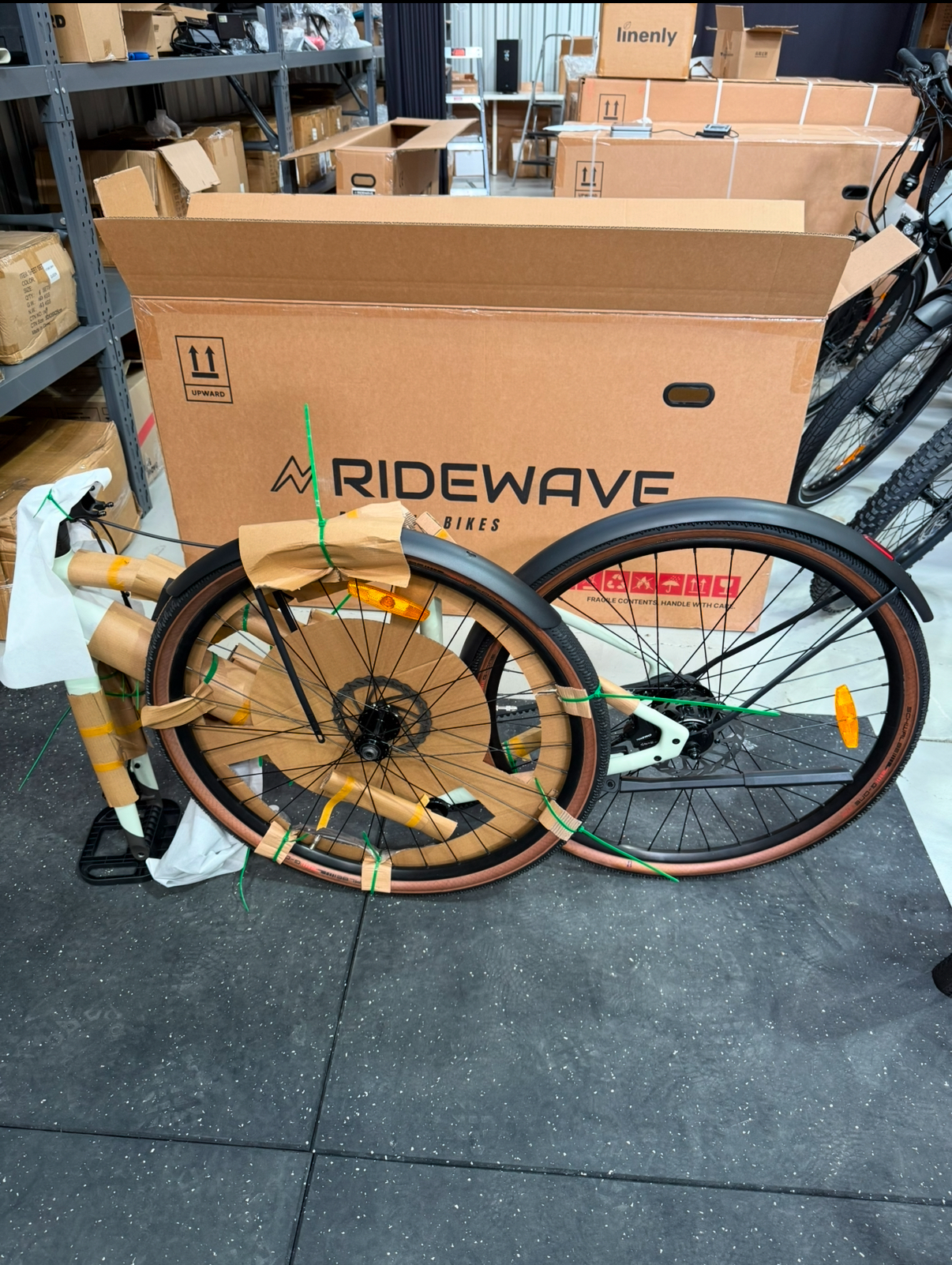
Step 2: Open the Parts Box
After cutting the zip ties, remove the parts box from the bicycle box and open it. The photo below displays all the components we now have.
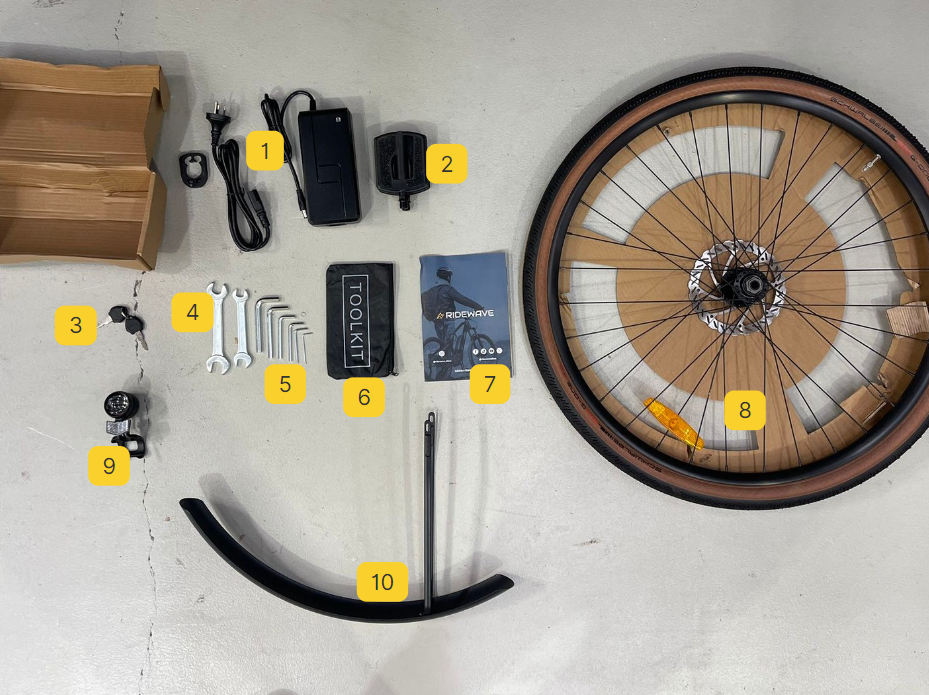
- Charger
- Pedals
- Keys
- Open-end wrenches/ spanners
- Hex Keys
- Tool Kit Bag
- Ridewave Brochure
- Front Wheel
- Headlight and handlebar mount cover
- Front fender
Step 3: Install the seat post
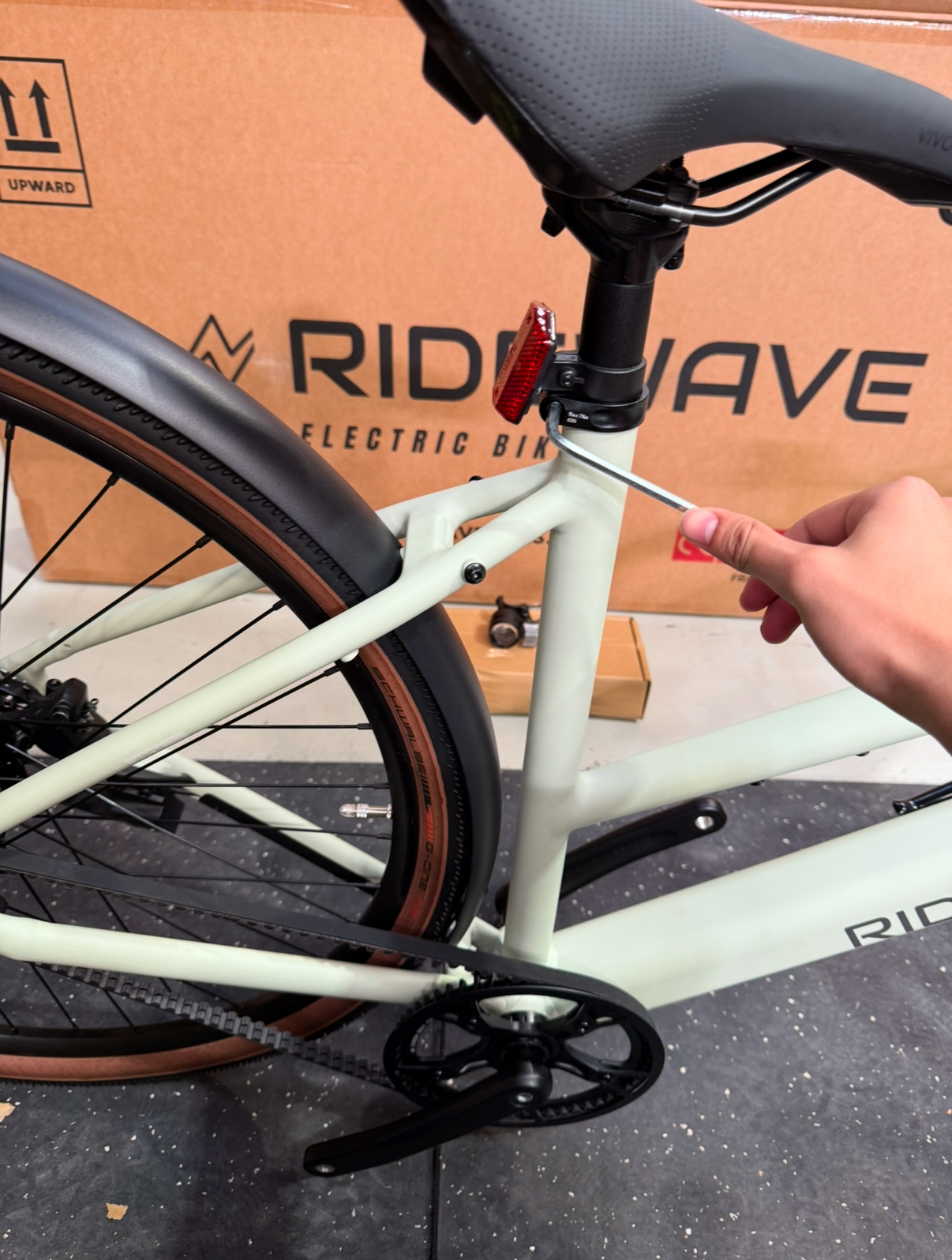
Insert the Seatpost: Begin by placing the seatpost into the seat tube on the bike frame. Ensure the seatpost is inserted at the desired height for comfortable riding.
Align the Seat: Position the seat so it is aligned straight with the bike frame for optimal comfort and control.
Tighten the Seatpost Clamp: Using an appropriate hex key (as shown in the image), tighten the bolt on the seatpost clamp. Turn the key clockwise to securely fasten the seatpost in place. Make sure the clamp is snug but be careful not to overtighten, which could damage the components.
Check Stability: Ensure the seat is stable and doesn’t move. If necessary, adjust the seatpost height or angle for a better fit.
Step 4: Install the handlebar

Remove the Bolts: Begin by using a suitable hex key or wrench to remove the four bolts shown in the images. These bolts secure the handlebar clamp.
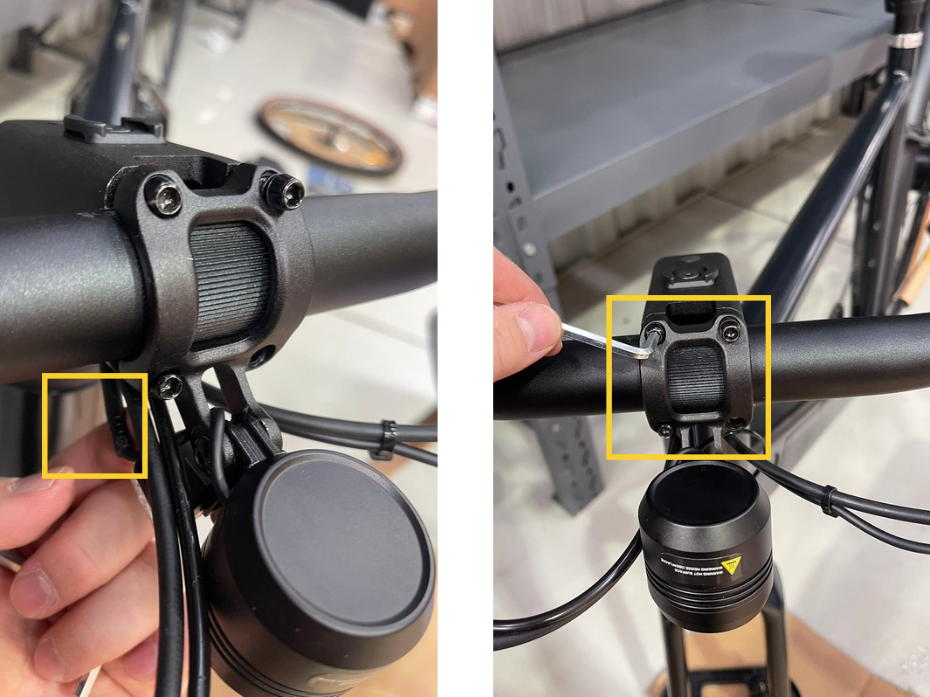
Position the Handlebar: Place the handlebar in the correct position on the stem. Ensure it’s centered and at the desired angle for comfortable riding.
Attach the Headlight and Handlebar Mount Cover: Align the headlight and handlebar mount cover over the handlebar, matching the holes with the bolt slots.
Reinsert and Tighten the Bolts: Insert the four bolts back into their positions through the headlight and handlebar mount cover and tighten them gradually, alternating in a cross-pattern (top-left, bottom-right, top-right, bottom-left). This ensures even pressure on the handlebar.
Connect the Headlight Power Cable: Link the thin cable designated for powering the headlight to its connection point. Ensure the connection is secure for proper headlight functionality.
Adjust the Headlight Angle: Adjust the headlight to the desired angle for optimal visibility. Ensure it’s aimed correctly for safe riding in low-light conditions.
Check the Alignment: After securing the bolts, connecting the cable, and adjusting the headlight, double-check the alignment of the handlebar to make sure it’s straight. Make any final adjustments as needed.
Step 5: Install the front wheel and fender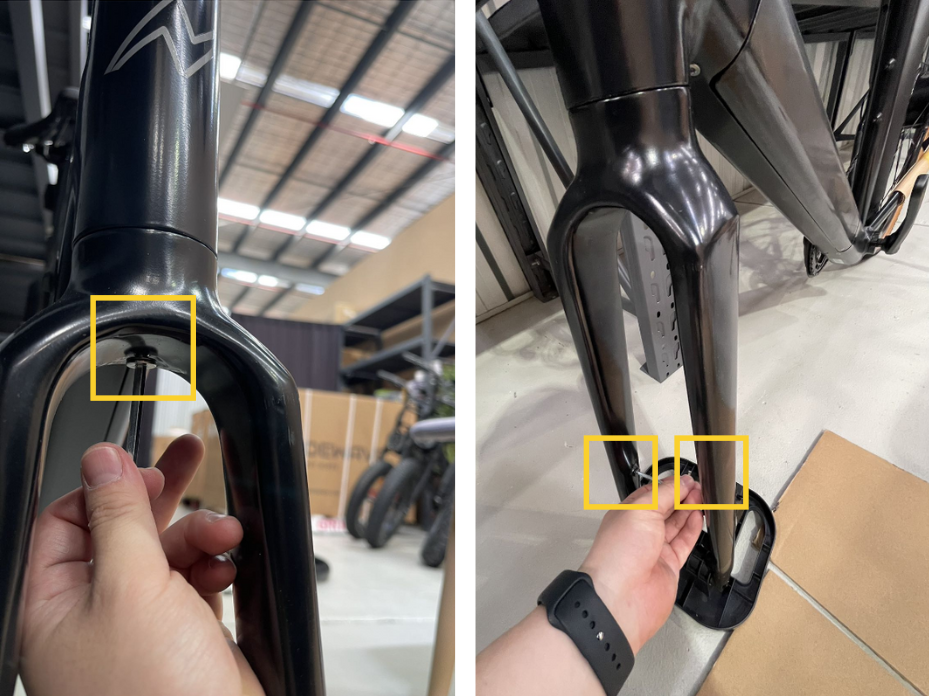
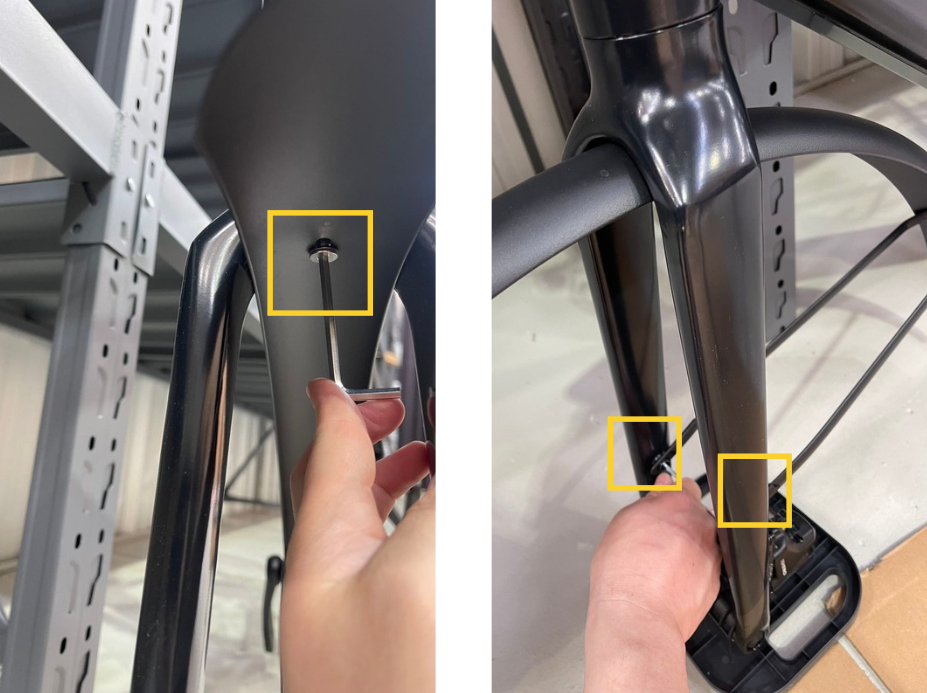
Unscrew the Front Fender Mounting Bolts: Begin by unscrewing the bolt at the top center of the fender’s mounting hole and the two bolts on the front fork. This step will allow you to attach the fender securely.
Attach and Secure the Fender: Position the fender between the forks, aligning the mounting holes. Insert the bolts and tighten them firmly on the mounting hole and the two on the front fork to fix the fender securely in place.
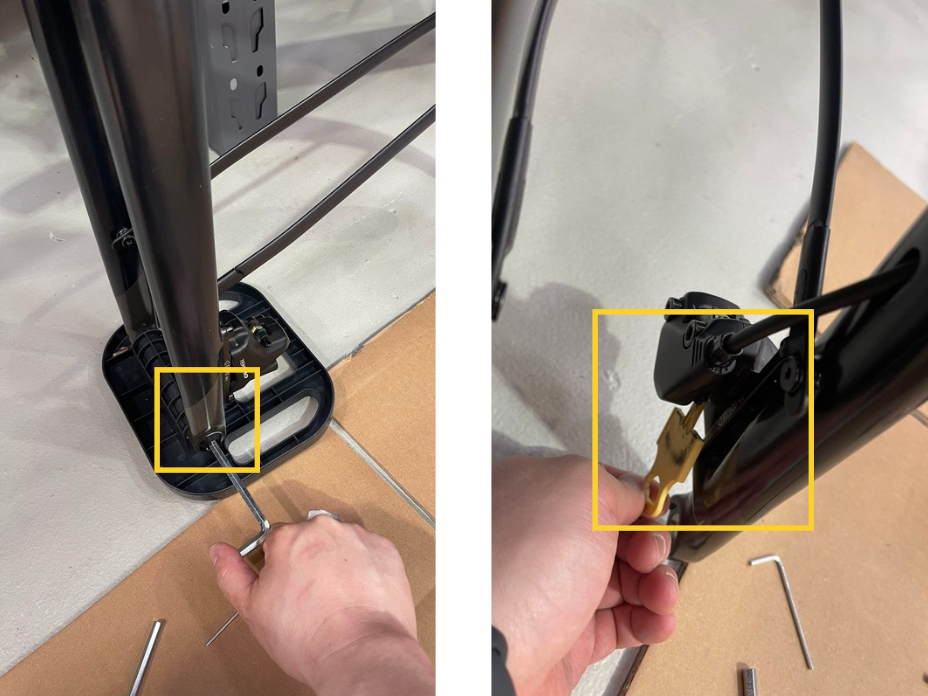
Loosen and Remove the Mounting Base: Use a hex key to loosen and remove the mounting base (highlighted in the left image). This will clear space for the next steps.
Remove the Brake Pad Spacer: Take out the brake pad spacer from the front wheel disc brake (highlighted in the right image). This step is necessary to prepare for installing the front wheel.
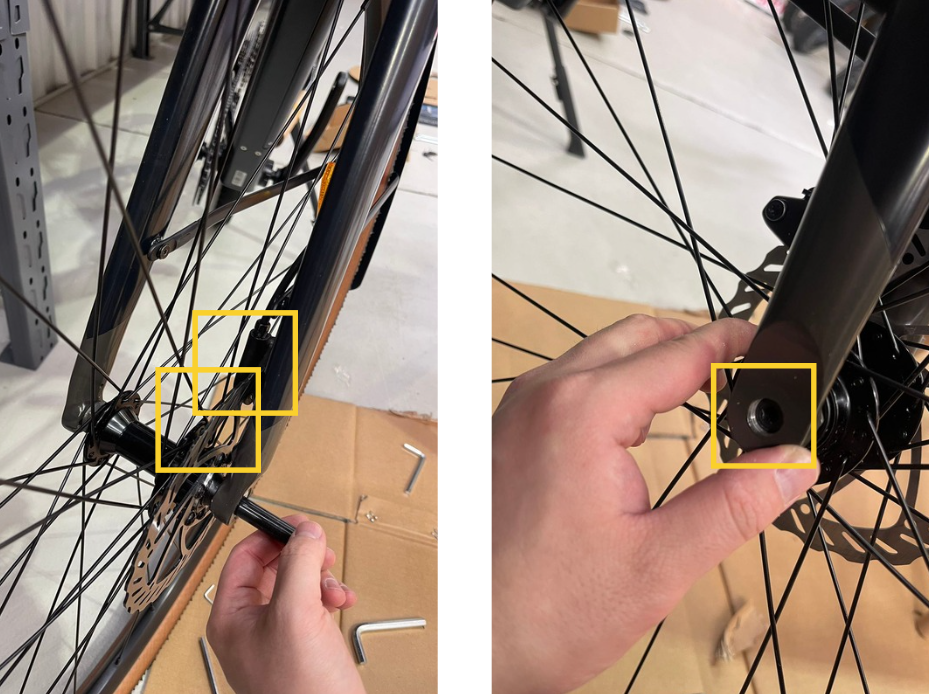
Align the Disc Brake Rotor: Carefully position the front wheel so that the disc brake rotor (the metal disc) aligns with the brake caliper (highlighted in the left image). The rotor should slide smoothly between the brake pads without touching either side.
Insert the Axle into the Fork Dropouts: With the rotor aligned, position the wheel so that the axle fits into the fork dropouts on each side. Make sure the axle is fully seated and the wheel is centered within the fork (as shown in the right image).
Secure the Axle: Once the wheel is properly aligned and seated, secure the axle by tightening the necessary bolts or quick-release skewer, ensuring the wheel is stable and properly centered.
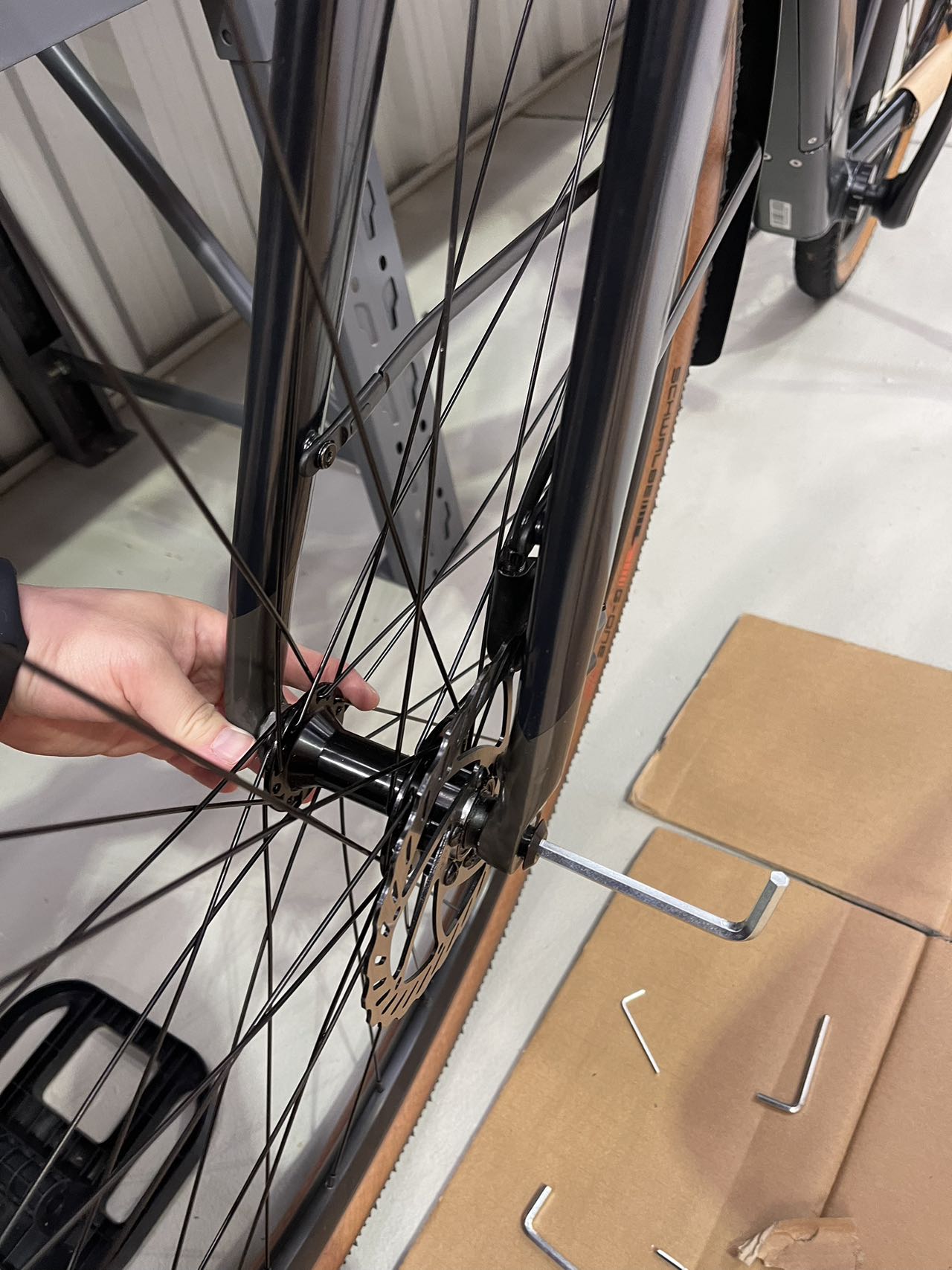
Step 6: Install the pedals
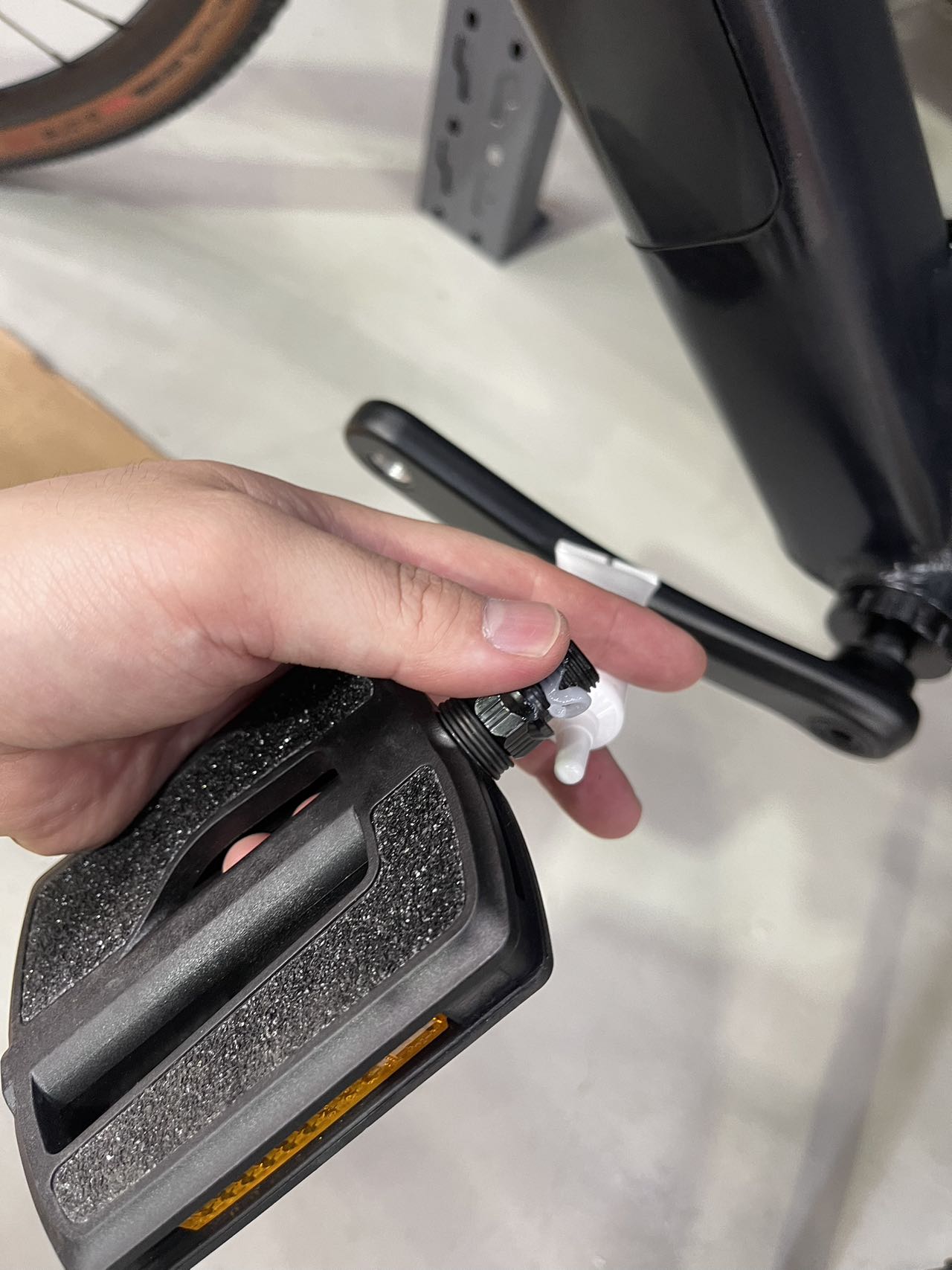
Apply Grease to the Pedal Threads: Begin by applying a small amount of grease to the threads of the pedal, as shown in the image. This helps prevent seizing and makes future removal easier.
Attach and Tighten the Pedals: Insert the pedal into the crank arm and hand-tighten it to ensure it’s threaded correctly. Then, use an open-end wrench to securely tighten the pedal. Be sure to tighten each pedal in the correct direction: the right pedal (R) tightens clockwise, and the left pedal (L) tightens counterclockwise.
Step 7: Battery removal and charging

- Removing the battery: To remove the battery from the bike, insert the key and turn it anti-clockwise (towards the front of the bike) to release the battery slightly from its position. Press down on the marked panel in the top-left corner (as shown in the image above) while gently pulling the battery away from the bike frame to fully remove it.
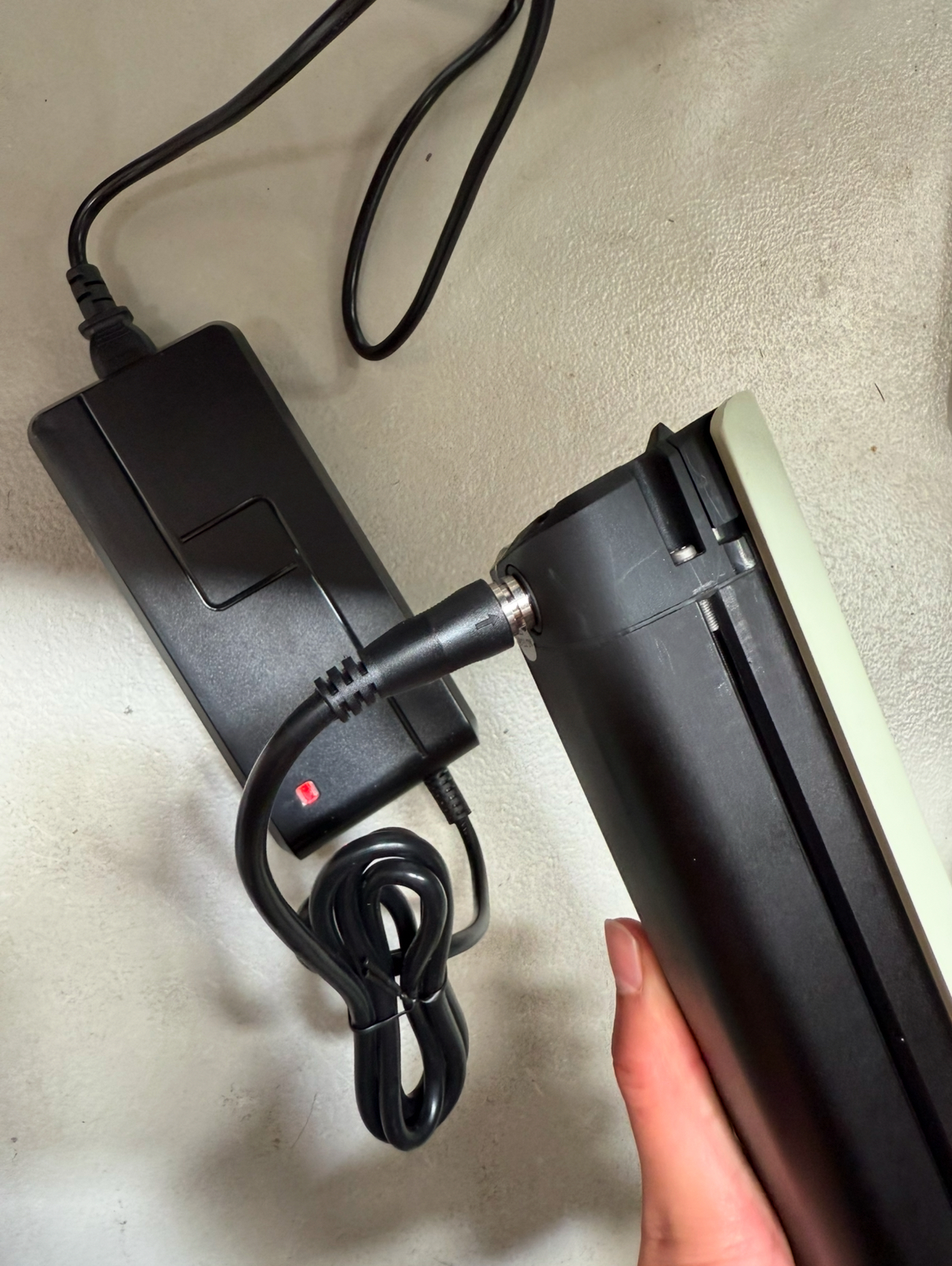
- Charging the battery: Before connecting the adapter to the battery, make sure the plug is securely inserted into the power outlet. Align the arrow on the charger plug with the port on the battery to ensure a proper connection. The charger’s indicator light will stay red while charging and will turn green once the battery is fully charged.
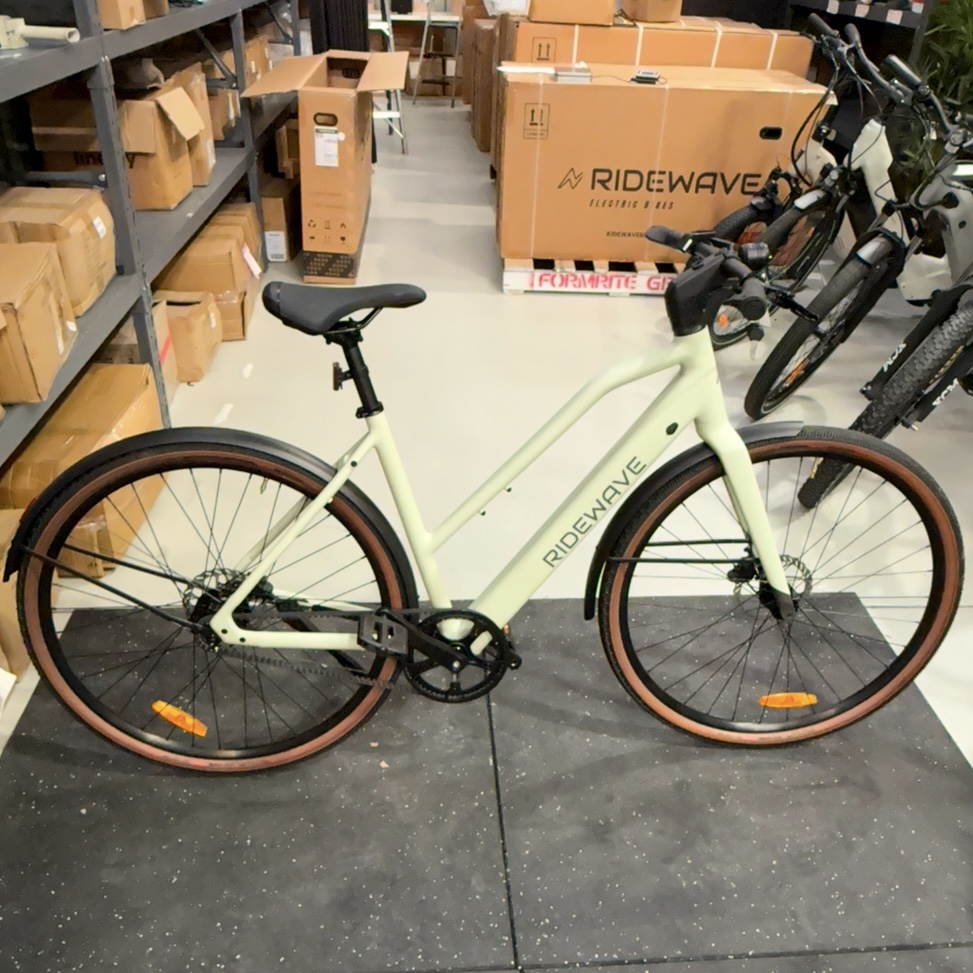
Final Steps:
Once the bike is assembled, it will need some fine-tuning and basic adjustments. The following links are the most common areas needing adjustment within the first few miles.
Adjust the derailleur- https://www.parktool.com/en-us/blog/repair-help/rear-derailleur-adjustment
Bed the brakes- https://www.youtube.com/watch?v=iUV2Eo9ERSk
Adjust the brakes- https://www.youtube.com/watch?v=uk_nC9anQcM
For any further questions, please reach out to support via the contact form: https://ridewavebikes.com.au/pages/contact-us
